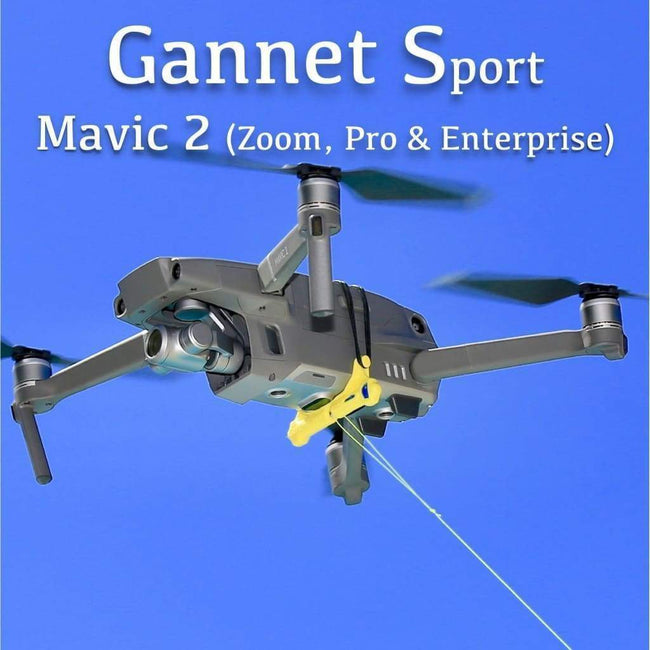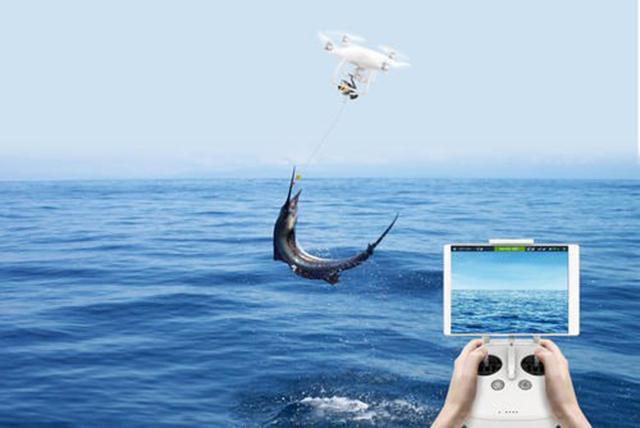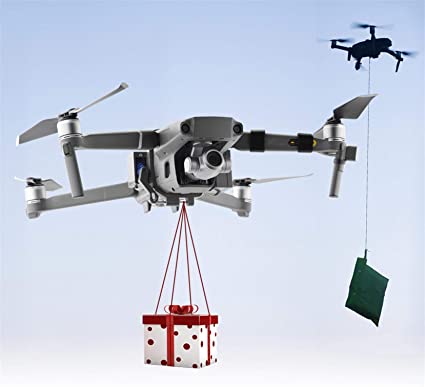
A new fishing style has emerged in New Zealand: drone fishing! This innovative new technique uses drone technology to open up new fishing opportunities. Drone Fishing NZ is a leading retailer that sells DJI and Splash drones. Splash drones, GoFish cams, and custom-built fishing gears are all available.
Aerokontiki Drones
Sharkan's Fishhawk drone captures better images of what you are doing. The stabilized camera captures 12 megapixel photos and 4k UHD Videos at 30 frames per Second. You can view the videos from your smartphone. This drone has a flight time of up to 23 minutes, a spare battery, and a good transmission range.
Mobula
Mobula drones are specifically designed to fly in the water. The drone's buoyancy and IP56 rating means it can withstand winds up to 20 km/h. It has safety features built in, such as an automatic return to home, payload release, and three different release mechanisms. In addition, you'll never have to worry about losing your drone because it will return to the water automatically if its battery runs out.
Banks'
The use of a fishing drone has become a huge trend, gaining the attention of anglers and sports enthusiasts. The downside to using a drone is its potential hazards. A drone is not designed to fish in deep water. If a drone crashes in the exact same place again, it can pose a problem. If this happens, the video information is not always reliable.

SplashDrone 4
Swellpro's SplashDrone 4 drone is waterproof and comes with a new float platform. It's ideal for fishing parties, all kinds of water activities and is made from corrosion-resistant materials and high-quality ABS to withstand any conditions. Smooth+ is the SplashDrone 4’s exclusive flight control system. This gives the user full control over the drone and keeps it stable in any environment. Its advanced technology allows it to capture every angle and every moment from the sky.
Drones for Fishermen
A New Zealand Fisherman Drone Fisherman is in for a real treat. Snapper are a prized species for drone fishing enthusiasts. They are beautiful and tasty, making them a delight to catch. These fish can often be found off the coasts on the North or South islands. They are most common during their spring spawning season, which is when large numbers of them congregate. These fish are readily available throughout the year, although they are less common in the fall.
Flying a Drone
There are a few things you can do to make your drone fishing trip in New Zealand a success. First, be aware of the law. It's illegal for a drone to be flown over any marine life or within 500 m of any marine mammal. Also, be aware of where you're flying your drone. You don't want it to get stolen or damaged.
Payload for a drone
The payload of a drone that you use for fishing is something you should be aware. A drone that can carry large fish and has enough endurance will be ideal. You won't catch enough fish if you only plan to fly your drone for a few seconds. New Zealand's drone fishing technology is improving.

FAQ
Is it illegal to fly a drone?
Flying drones is an offense in certain countries, including Australia, Canada, Germany and Japan. It is legal in some other countries, such as France and Italy, the Netherlands, Poland, Russia or Switzerland, Turkey, Ukraine, and Vietnam.
Which US states allow drones?
You can legally operate a drone for hobby purposes. The Federal Aviation Administration (FAA), established guidelines that allow individuals to fly small unmanned aircraft systems. Before UASs can be flown, they must be registered with FAA. The FAA also allows commercial operators to fly these devices if certain conditions are met.
Do drones fall under the control of the FAA?
The FAA supervises all aspects related to drone operations, including certification requirements and safety standards.
Can my drone be flown in my local park?
Yes, drones can be flown in parks around the world. Due to safety concerns, certain countries don't allow you to fly drones in parks. You can fly drones legally in these places.
How can I keep drones off my property?
Drones are increasingly popular for home surveillance. However, they pose a threat to privacy and security. If you want drone attacks to be avoided, you can install motion sensors all around your property. These sensors will detect any flying objects that are not authorized.
Do I need special training to fly a drone?
To fly your drone, you don't have to be an expert in flight mechanics. You only need a remote controller unit and basic knowledge about flight mechanics.
What laws are there regarding drones flying?
The Federal Aviation Administration (FAA), which regulates all aspects drone operations in the United States of America, is responsible for them. To operate a drone commercially, you must first get a certificate from the FAA. Then, you must complete a course in piloting skills and pass an exam. Finally, you must pay a fee to the agency.
Statistics
- According to Indeed, a drone pilot gets paid $25.73 per hour on average in the US. (dronesgator.com)
- According to the multiple listing service (MLS), houses and apartments with drone photographs are up to 68 percent more likely to sell than those without pictures. (thedroneu.com)
- Research and Markets predict a growth rate of 51.1% over the next five years. (thedroneu.com)
External Links
How To
How to Fly Drones with Beginners
A drone can be used to fly remotely controlled aircraft for photography, surveillance, scientific research, hobby and commercial purposes. Drones have been in use since World War II. DJI's Phantom quadcopters became commercially available in 2010. There have been many drones made since then. These range from beginner-friendly drones like Parrot AR Drone 2.0 to more advanced multi-rotor craft like DJI Mavic Pro.
There are several ways to fly a drone, including;
-
Remote control: This uses a remote control device that attaches to your hand and allows you control the drone along its flight path. There are two types of controllers available: joysticks and on/off switches.
-
Manual Control – This allows remote operation of the drone via GPS coordinates using a smartphone application. The app will give you instructions.
-
Autonomous Flight – This is when the drone handles all the piloting tasks. The drone is able to fly autonomously, without the need for human intervention. The drone must be equipped with a camera and sensors that can capture images and data in order to fly autonomously.
-
Triggered Flying - This method works in the same way as manual control. However, the pilot has to manually set up a route for the drone and it follows that route until reaching the endpoint. The drone automatically lands once the route has been completed and returns to the base.
-
Landing Gear – A few drones come with landing gear. This allows them land safely in the event of losing power or running out of battery.
-
Goggles - Some pilots wear goggles to protect themselves from debris while operating.
-
Camera - Some drones are equipped with cameras allowing you to capture photos and videos from above.
-
Obstacles. Some drones can have obstacle avoidance technology that stops them from hitting obstacles.
-
Speed – Some drones can reach speeds in excess of 40 mph.
-
Battery Life - Most drones are capable of lasting between 20 minutes and three hours, depending on the power that you use.
-
Some drones are capable of traveling up to 30 miles depending upon their make and model.
-
Power source - Some drones need an external power source, while others use internal batteries.
-
Weight - Some drones weigh less than 1 pound, whereas other models weigh up to 4 pounds.
-
Size - Drones can range in size from tiny devices that can fit in your palm to heavy crafts that weigh 50 pounds.
-
Price - All drones fall within a specific price range, from high-end models that can cost thousands of dollars to lower-cost options starting at $100.